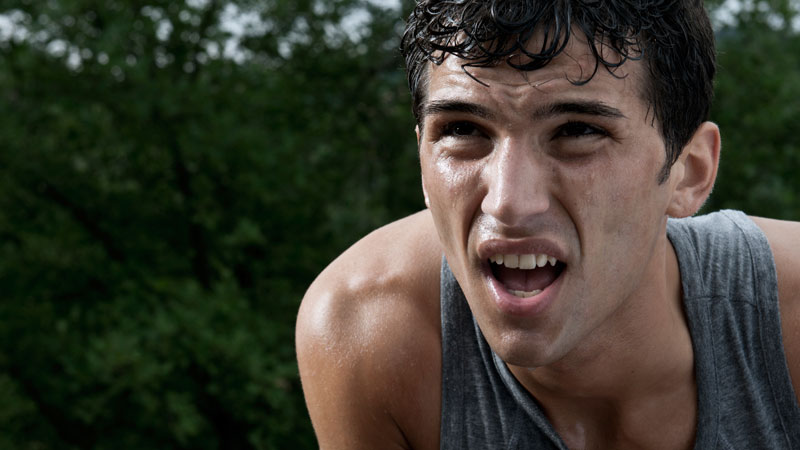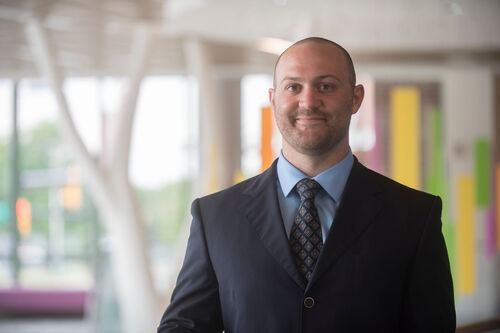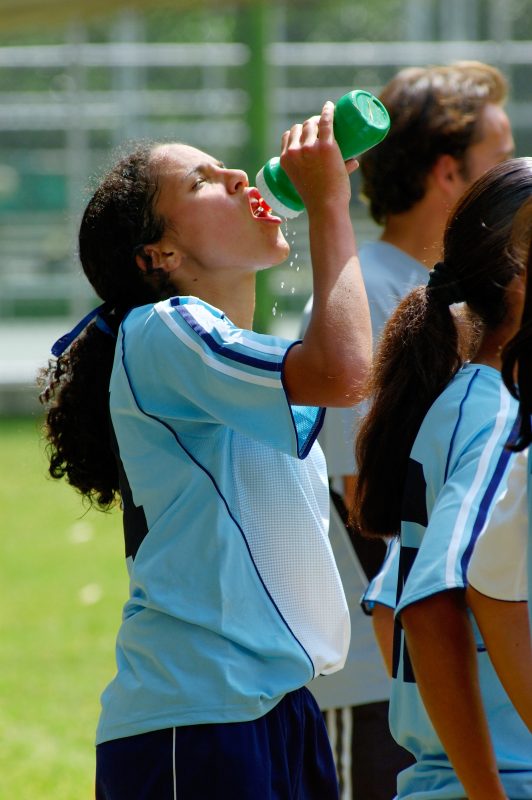
The risk of heat-related illnesses is a big concern as kids begin preseason training for outdoor sports like cross country, football and soccer. Knowing who is most at risk and how to prevent and recognize heat-related illness are critical steps to any summer sport training program.
“Heat-related illnesses can be very serious. What may first appear as fatigue or mild cramps, can quickly progress to life-threatening heat stroke – and they often share the same initial symptoms like thirst, confusion and headache,” said Zaid Khatib, MD. “Too often people don’t recognize these signs as an athlete in distress, which is why athletes, coaches and parents need to have a strong awareness of heat-related illnesses and a well-established emergency plan to keep athletes safe.”

Dr. Khatib is a sports medicine physician at Akron Children’s, where he helps diagnose and treat patients with sports- and activity-related injuries.
Know the risk of sports during high heat
Before practices begin, understand that certain factors put athletes at greater risk of heat-related illness, including:
- History of a heat illness, previous illness or medical condition
- Lack of proper hydration (dehydrated)
- Sleep deprivation/fatigue/tiredness
- Training at the hottest hours of the day
- Wearing additional equipment (helmets, pads, etc.)
- Increased stress levels
- Low physical fitness or high body mass index (BMI)
- Improper work/rest cycles during workouts
- Use of diuretics (coffee, energy drinks, antihistamines and certain medications)
Prevention is best to prevent heat-related illness
To help prevent heat-related illness, Dr. Khatib recommends allowing kids time to adjust to the heat and the physical demands of the sport.
“Athletes should gradually adjust to heat over a period of 7 to 14 days, with gradual progression of duration and intensity of physical activity, duration of heat exposure and phasing in of equipment to avoid injury and illness,” added Dr. Khatib.
Dr. Khatib also recommends:
- Drinking plenty of liquids – before, during and after activities – to stay hydrated, even if an athlete says he isn’t thirsty.
- Avoiding intense activity outdoors during the hottest hours of the day.
- Taking frequent breaks and encouraging kids to go indoors or find a cool place immediately whenever they feel overheated.
- Placing a cool towel around an athlete’s neck after intense activities to help lower body temperature.

Hydration is important so make sure athletes drink plenty of liquids – before, during and after activities – to avoid heat-related illnesses.
Recognize the signs of heat-related illness
Heat-related illnesses are brought on when the body’s natural cooling systems have trouble keeping up during very hot, humid days, resulting in a rapid rise in body temperature. Early recognition and treatment of heat-related illnesses are key to avoiding serious complications. The 3 most common types are:
Exercise-Associated Muscle Cramps happen suddenly or are sometimes progressive, involuntary, painful contractions (or flexing) of muscles during or after exercise. Other symptoms may include thirst, fatigue/tired and sweating.
Heat exhaustion occurs when an athlete has difficulty exercising effectively due to a combination of high temperatures, excessive sweating and inadequate fluid and salt replacement. Symptoms include:
- Core body temperature below 105°F
- Excessive fatigue/tired or difficulty participating
- Headache, dizziness and/or confusion (mild)
- Weakness, poor muscle coordination
- Vomiting/nausea
- Low blood pressure
Exertional Heat Stroke (EHS) occurs when the body’s heat-regulating system is overwhelmed by excessive heat. It is a life-threatening emergency and requires immediate medical attention, and rapid cooling. Symptoms include:
- Core body temperature typically above 105°F
- Extreme difficulty or inability to continue participating
- Collapse, confusion, seizures, altered consciousness, combative, irritable
- Increased heart rate
- Low blood pressure
- Rapid breathing
- Hot, wet or dry skin
“Summer training is important for athletes because it helps them build endurance and avoid injuries during the season, so it’s important that everyone is aware of how to manage hot conditions and know the signs an athlete is struggling to avoid a serious situation that could affect an athlete’s performance all season,” added Dr. Khatib.
Akron Children’s supports local student-athletes by providing athletic training services at dozens of local high schools. Our athletic trainers work with the Akron Children’s sports medicine team to help diagnose and treat sports- and activity-related injuries and illnesses. For more information, talk to your provider or schedule an appointment.










